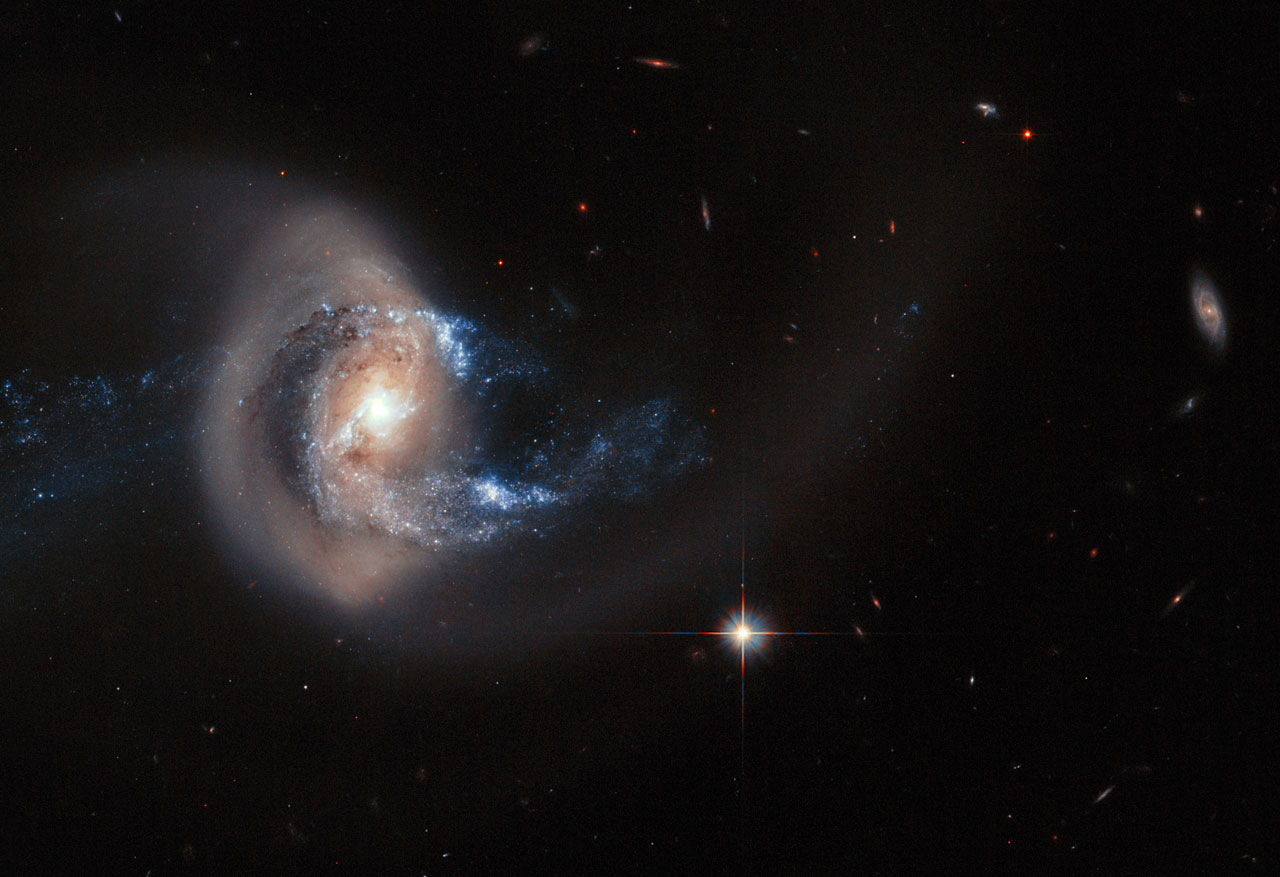Galaxy Merger Caught in Stunning Hubble Telescope Photo, Video
A spiral galaxy gets twisted out of shape after coming too close to a cosmic neighbor in a gorgeous photo captured by NASA's Hubble Space Telescope.
The spiral galaxy, known as NGC 7714, lies about 100 million light-years from Earth. Between 100 million and 200 million years ago, NGC 7714 drifted too close to a smaller, neighboring galaxy called NGC 7715. The resulting galaxy merger has been violent and dramatic, changing the structure and shape of both NGC 7714 and NGC 7715, researchers said. Scientists used the Hubble observations to create a stunning video tour of the galaxy merger.
"Tell-tale signs of this brutality can be seen in NGC 7714's strangely shaped arms, and in the smoky golden haze that stretches out from the galactic center," European Space Agency (ESA) officials wrote in a description of the new image. (Hubble is a collaborative mission involving NASA and ESA.)
The merger has also created a bridge between the galaxies, which allows gas and other materials from the smaller NGC 7715 to travel into the larger NGC 7714.

The influx of new material has spurred bursts of star formation in NGC 7714, ESA officials said. In the Hubble image, the majority of starbirth activity can be seen at the bright center of the galaxy, although new stars are forming throughout NGC 7714.
Scientists have named the NGC 7714/NGC 7715 pair Arp 248.
NGC 7714 is classified as a Wolf-Rayet starburst galaxy. Most of its newborn stars are of the Wolf-Rayet type, which are big, hot and bright. At birth, Wolf-Rayet stars are dozens of times more massive than the sun, but powerful winds quickly carry away most of their material.
Get the Space.com Newsletter
Breaking space news, the latest updates on rocket launches, skywatching events and more!
The Hubble Space Telescope launched in April 1990 aboard the space shuttle Discovery and was repaired or upgraded by astronauts on five different servicing missions between 1993 and 2009. The iconic instrument's observations have helped revolutionize astronomers' understanding of the cosmos.
Follow us @Spacedotcom, Facebook and Google+. Original article on Space.com.
Join our Space Forums to keep talking space on the latest missions, night sky and more! And if you have a news tip, correction or comment, let us know at: community@space.com.

Kasandra Brabaw is a freelance science writer who covers space, health, and psychology. She's been writing for Space.com since 2014, covering NASA events, sci-fi entertainment, and space news. In addition to Space.com, Kasandra has written for Prevention, Women's Health, SELF, and other health publications. She has also worked with academics to edit books written for popular audiences.









